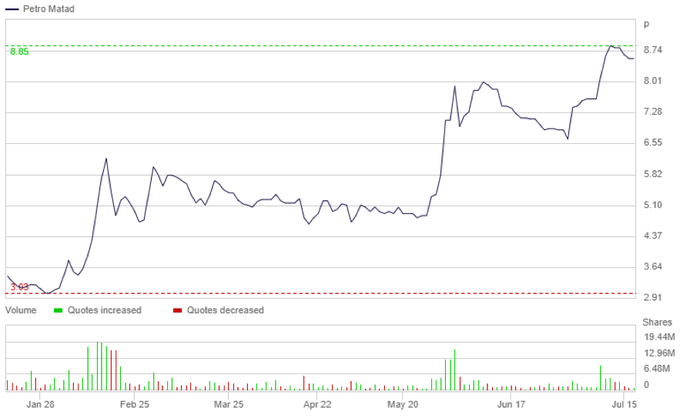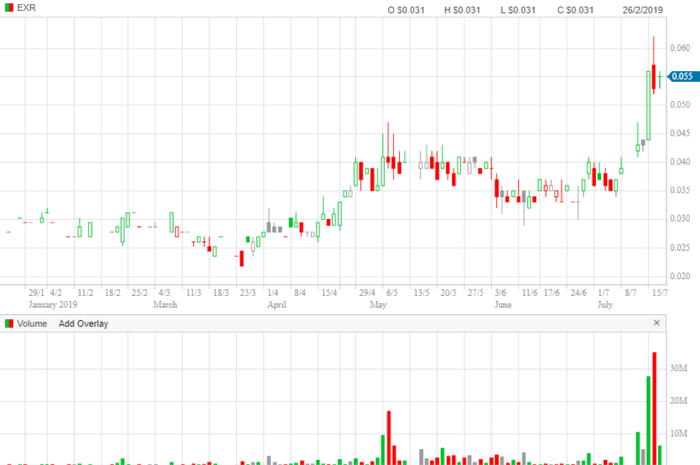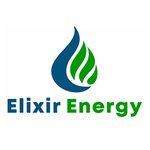China is desperate for gas – buying high price LNG imports
Hey! Looks like you have stumbled on the section of our website where we have archived articles from our old business model.
In 2019 the original founding team returned to run Next Investors, we changed our business model to only write about stocks we carefully research and are invested in for the long term.
The below articles were written under our previous business model. We have kept these articles online here for your reference.
Our new mission is to build a high performing ASX micro cap investment portfolio and share our research, analysis and investment strategy with our readers.
Click Here to View Latest Articles
Air pollution in China is a critical issue. Thankfully, it isn’t one that’s being ignored with the country taking steps to reduce its particulate and carbon dioxide emissions and its reliance on coal. At the same time, China’s rising reliance on crude oil imports is worrying too, as geopolitical tensions heat up in the Gulf and the South China Sea.
In response, the country has turned to gas. Specifically LNG imports, as domestic and regional gas producers can’t keep up with the rising demand.
LNG is produced when gas is converted into a super-cooled and liquified form so that it can be shipped to its customer. But LNG is not China’s preferred type of gas.
Converting gas to LNG and shipping it raises the price, and brings geopolitical risk into the picture as ships need to travel through various international and possibly dangerous waters. Just recently insurance premiums of ships travelling in the Gulf region are seeing sharp and sudden price hikes.
China has tried to secure local supply — upping its pipeline gas imports and lifting domestic gas production, but LNG imports to China are still expected to rise by another 30% from ~73 billion cubic meters (bcm) in 2018 to ~95 bcm in 2020, say The Oxford Institute for Energy Studies (OIES).
Of course, a gas pipeline transporting gas through the Gobi Desert has no such risks. This is exactly what Elixir Energy (ASX:EXR) has in mind.
The company has a giant seven million acre Production Sharing Contract issued by the Mongolian government. This Nomgon IX coalbed methane PSC, is located on Mongolia’s border with China. It has an independently certified 40Tcf (best case) unrisked recoverable prospective resource and a huge 7.6Tcf risked prospective resource.
The PSC is just over 400 kilometres from China’s West East Pipeline, meaning it can deliver a low cost local gas supply, and reduce China’s reliance on expensive LNG imports. Avoiding the costs of liquefaction, gas from this area will be highly cost competitive with e.g. similarly produced CBM from Australia that has to be pipelined 400 km to Gladstone, liquefied, shipped to the Chinese coast, re-gasified, then delivered to the domestic Chinese market.
Rio & Oyu Tolgoi
Like China, Rio Tinto (ASX:RIO) is also seeking a reliable — and ideally low emission — energy supply – across its global operations. To power its massive Oyu Tolgoi Copper mine in southern Mongolia the Mongolian government has specified that RIO must secure a local energy source to replace electricity current imported from China.
Rio has now finally committed to construct a power plant in Mongolia to fuel its Oyu Tolgoi mine with a locally sourced energy supply. Analysts estimate that Rio and its partners will spend $1 billion to construct a power station to run the Oyu Tolgoi copper mine, yet it looks like that plant will be coal-fired.
This is in stark contrast to Rio’s global intention to play a part in supporting clean energy. They seem to have simply acquiesced in order to get the project up and running.
A more environmentally friendly choice would be to use Elixir Energy’s (ASX:EXR) coal bed methane (CBM) gas from the Nomgon IX Production Sharing Contract (PSC). Oyu Tolgoi is conveniently located within EXR’s PSC area.
While Elixir’s PSC is not yet in production, neither is the large underground part of Rio’s Oyu Tolgoi. But by the time Oyu Tolgoi is finally fully up and running, the Nomgon IX PSC could well have a ready supply of gas available — assuming all goes to plan. Originally scheduled for early 2021, Rio now says first production could now come between May 2022 and June 2023.
The economic benefits of a gas-fired power plant stack up for Rio too.
Natural gas-fired power plants are much cheaper to build than coal-fired plants. The US Energy Information Administration states that a gas-fired power plant costs roughly a third of a coal fired plant. This is because coal needs all sorts of equipment to transport it, crush it, prep it and collect the ash and dust.
The gas from Elixir’s Nomgon PSC will be low cost itself. Given that its primary customers will be local — in Mongolia (including Oyu Tolgoi), China’s energy grid (gas and electrical), and possibly other Asian nations — Elixir won’t need to convert its gas to liquefied natural gas (LNG).
Gas from Elixir’s Nomgon PSC could be a real option for Rio. A combination of delays to get Oyu Tolgoi up and running, along with RIO’s intention to take a cleaner-energy stance, plus the cheaper price of gas when compared to coal — especially if locally sourced, make Elixir’s gas an attractive option to supply power to the mine.
And locally sourced gas can help the development of local renewables — by “firming up” their supply — an aim that would likely not only be supported by Rio, but also by the regional Governments who are promoting a massive “Asian Super Grid” to help deliver renewables from the Gobi region to as far afield as japan.
Petro Matad
Also of interest in the trending Mongolian energy space is Petro Matad (LON:MATD). The company is seeking to deliver a Mongolian oil discovery in the next few months. Its spud must be due fairly soon, at least as is suggested by the company’s share price this year...

Elixir draws another step closer to drilling Nomgon IX
Like that of Petro Matad, Elixir shareholders have done well recently, driving the ASX junior’s share price up as much as 66% in just the last week, to hit 52-week highs.

Hot on the heels of receiving final environmental approval to commence its exploration program at the Nomgon IX CBM PSC, Elixir has awarded a tender for its upcoming drilling program.
It awarded the contract to Mongolia’s Erdenesdrilling LLC, and Elixir and the company are now finalising a binding drilling services contract with a view to executing this within the next few weeks — paving the way for the company to commence its exploration program.
The company’s ability to quickly progress the project can be attributed to the extensive executive experience behind the board which includes former managing director of Queensland Gas Company (QGC) Richard Cottee as non-executive chairman.
Cottee steered QGC from a $20 million junior to a $5.7 billion takeover, and he also has a comprehensive knowledge of doing business outside Australia (e.g. in Europe) having injected his vast corporate and operational experience into companies operating in that region.
Erdenes brings local knowledge and operational expertise
Erdenes has the optimal combination of operational expertise, fit-for-purpose equipment, cost effectiveness, suitable HSES standards in place and experienced personnel to effectively undertake Elixir’s CBM core hole program.
The spudding of the first well will closely follow the commencement 2D seismic acquisition, which will start in the next few weeks — a much anticipated development, as indicated by the group’s recent share price performance.
Elixir will provide Australian expertise to supervise the drilling and testing of the exploration wells to ensure they meet the highest standards of CBM drilling practices, which have been built up in Australia over thousands of wells in recent decades.
The world class potential of the Elixir’s Nomgon CBM PSC in Mongolia has been independently validated by ERC Equipoise Pte Ltd (ERCE) — one of the largest petroleum Reserves and Resource auditors globally. Reflecting the credibility of ERCE, Carnarvon Petroleum (ASX:CVN) just announced that it too has engaged the international energy expert to independently review its recently discovered Dorado resource located off the North of Western Australia.
If Elixir is able to prove up its ERCE-validated resources, and follow through to production, it has a ready market to serve in China, plus potentially Rio’s Mongolian operations too.
General Information Only
This material has been prepared by StocksDigital. StocksDigital is an authorised representative (CAR 000433913) of 62 Consulting Pty Limited (ABN 88 664 809 303) (AFSL 548573).
This material is general advice only and is not an offer for the purchase or sale of any financial product or service. The material is not intended to provide you with personal financial or tax advice and does not take into account your personal objectives, financial situation or needs. Although we believe that the material is correct, no warranty of accuracy, reliability or completeness is given, except for liability under statute which cannot be excluded. Please note that past performance may not be indicative of future performance and that no guarantee of performance, the return of capital or a particular rate of return is given by 62C, StocksDigital, any of their related body corporates or any other person. To the maximum extent possible, 62C, StocksDigital, their related body corporates or any other person do not accept any liability for any statement in this material.
Conflicts of Interest Notice
S3 and its associated entities may hold investments in companies featured in its articles, including through being paid in the securities of the companies we provide commentary on. We disclose the securities held in relation to a particular company that we provide commentary on. Refer to our Disclosure Policy for information on our self-imposed trading blackouts, hold conditions and de-risking (sell conditions) which seek to mitigate against any potential conflicts of interest.
Publication Notice and Disclaimer
The information contained in this article is current as at the publication date. At the time of publishing, the information contained in this article is based on sources which are available in the public domain that we consider to be reliable, and our own analysis of those sources. The views of the author may not reflect the views of the AFSL holder. Any decision by you to purchase securities in the companies featured in this article should be done so after you have sought your own independent professional advice regarding this information and made your own inquiries as to the validity of any information in this article.
Any forward-looking statements contained in this article are not guarantees or predictions of future performance, and involve known and unknown risks, uncertainties and other factors, many of which are beyond our control, and which may cause actual results or performance of companies featured to differ materially from those expressed in the statements contained in this article. S3 cannot and does not give any assurance that the results or performance expressed or implied by any forward-looking statements contained in this article will actually occur and readers are cautioned not to put undue reliance on forward-looking statements.
This article may include references to our past investing performance. Past performance is not a reliable indicator of our future investing performance.

